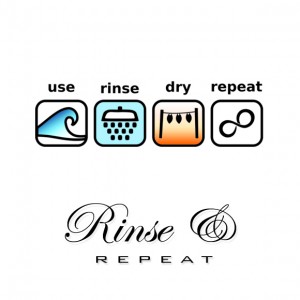
jmexclusives / Pixabay
Did you hear the one about the boss who turned herself into a potato during a video call? Sounds like a joke my six-year-old would tell.
The manager downloaded a filter for a virtual meeting platform and could not turn it off. This filter made her appear as a potato to the other participants on the video call. Because she couldn’t figure out during the meeting how to turn off the filter, she resigned herself to remain a potato for the entire meeting. It was posted to Twitter and, to no surprise, went viral.
Since the pandemic drove us to work behind screens, we have witnessed or read about a variety of stories related to someone’s presence on a virtual meeting. The accounts have been equally as playful as Potato Boss and others have been downright shocking.
The point here is that interacting virtually with colleagues is here to stay and how we portray ourselves via video matters. It can be the difference between your colleagues embracing your ideas and those same colleagues not retaining your ideas at all.
We want people to not only listen to us but also remember what we said. To increase the chances that your message is really getting through, there are simple and tangible techniques to employ to demonstrate a virtual leadership presence worth listening to.
Match up your channels
When we want to convey a message, we generally do so through three channels: visual, vocal, and verbal. The visual channel is about what we look like when we communicate. This is gestures and facial expressions but also our background on a video call. The vocal channel is demonstrated by the tone, pace, and pitch of our voice. The words we say represent the verbal channel.
Notice that two of the three channels are nonverbal (visual and vocal). It is no surprise that how we say something is critical to the message.
Ever heard of the data point: “93% of communication is nonverbal”? It is a fantastic soundbite but false. This decades old claim comes from a misrepresentation of research conducted by Albert Mehrabian. It implies that words are only 7% of the message. This is simply not true and is why I draw attention to this misinformation. While nonverbal delivery is critical to the message, words are important too.
The percentage each channel contributes to meaning is irrelevant. The best communicators are exceptionally good at communicating through each channel in a consistent and proficient way.
For example, a client of mine shared the story of interviewing for a job. He was well qualified and a charismatic guy. He has an engaging smile and a reputation of working well with others. However, he did not get the job. He later learned that what he thought was a demonstration of enthusiasm was actually “speaking so fast, we had trouble understanding his point.”
While his visual delivery was spot on (engaging smile and a suit), his vocal delivery was a distraction (pace) which ultimately inhibited his verbal delivery.
This is an example of how incongruence or the channels not matching up, throws up a red flag to the audience. The pace my client spoke with during the interview caused his audience to be confused. In addition, they likely were preoccupied with his pace and thus did not fully realize his qualifications.
Incongruence creates distraction and who can listen properly while distracted?
The goal here is to strive for congruence, consistency, and proficiency across all three channels. This maximizes the odds that the message is not only heard but embraced.
Best practices
Some virtual interactions will require you to employ all the tips below. Other situations are not as critical, and you can be more relaxed. Again, the goal is to minimize the distraction that takes place when communication channels are not lining up.
- Look into the camera: To communicate effectively visually, a speaker must be facing the audience and making eye contact. To do this virtually, look into the camera, not at your audience on the screen. It is counter intuitive. From the speaker’s perspective, it feels more natural to adjust your gaze to each person, their individual tile, on the screen. However, from the audience’s perspective it may look odd or wandering. If you want to capture attention, engage, or inspire your audience, do not look at them on the screen. Look directly into the camera.
- Mind your background: People will naturally look at what is in the background of the speaker. Depending on the background, it may result in a slight or significant distraction. The best way to understand if your background is distracting is to ask friends, family, or colleagues for some feedback. If your background is distracting, some may be nice enough to tell you. For instance, a client of mine informed me that the plant I had in my background, while nice, looked like it was growing out of my head. Thankfully, she spoke up to tell me but not everyone will. Ask for feedback.
- Prepare: If you have something important to say, practice it out loud in advance of when you need to say it. Speaking is a skill to be practiced just like any other. Thinking about what to say won’t cut it. For example, if I want to get good at shooting baskets in basketball, do I sit and think about it? Probably not. I go out and practice it. The same goes for speaking. Articulating the words out loud will build confidence and enable you to focus on engaging the audience (by looking into the camera.)
Advanced practice
What if you have no idea what kind of virtual presence you have? Maybe you already look directly into the camera, have a simple and attractive background, and arrive fully prepared to each interaction, then what?
Record yourself.
It’s ok. You can cringe. Listening or seeing a recording of yourself is hard for all of us but it is also the quickest way to see how your channels are lining up. Do you have a smile or warm expression on your face while delivering good news? Do you fidget or shift in your chair while you speak? What does your eye contact look like? The recording will provide you with valuable information. If this approach is just too stomach-churning, partner with a trusted colleague who will give you candid and helpful feedback or hire a coach.
Having an engaging and effective virtual presence is another, layered-on expectation of today’s leaders. It is another change we must all adapt to, but the good news is the channels by which we communicate have not changed. Syncing the channels up while we communicate will ensure the message gets through, both virtually and face-to-face.
This article was originally published on the Growth Partners Consulting blog.
Business & Finance Articles on Business 2 Community
(48)





